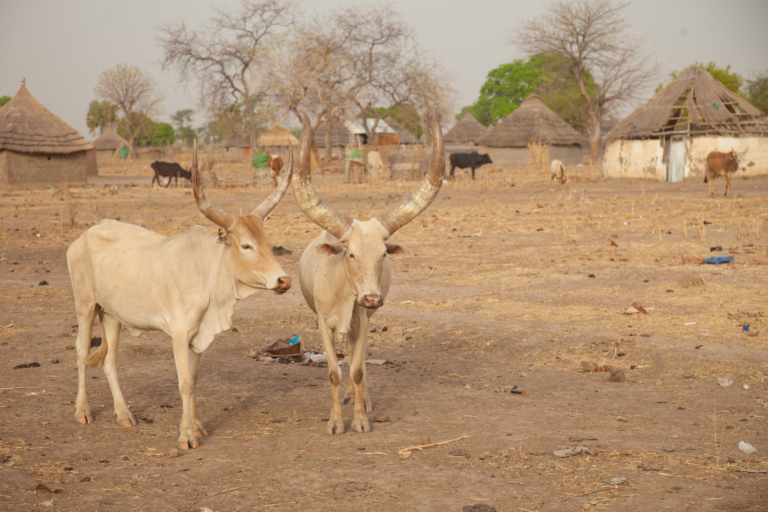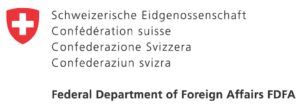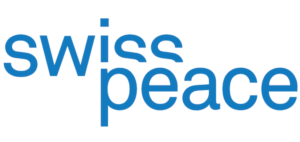Within this blog, Chol Changath, South Sudanese Research Specialist in Livelihoods and Food Security, reflects on the potential impact of COVID-19 on rural community work within South Sudan. Whilst social distancing measures may principally limit food production as farmers and groups within the community cannot gather in close proximity to undertake work, the blog also explores the deeper ramifications of limiting close communal contact and working, including the impact on communal support networks, loss of income and potential hostility of communities towards aid actors relaying COVID-19 social distancing recommendations and adapting Livelihood programming accordingly.
In rural areas right across South Sudan, it is common for communities to work together closely in order to support communal livelihood activities, such as growing food, maintaining local infrastructure, caring for children or any number of other essential activities. Such communal working is an integral part of South Sudanese identity and culture, as well as being essential for ensuring food production, resilience and societal accountability.
However, today this is being threatened by the implications of social distancing guidance related to COVID-19. A recent report by International Rescue Committee for example found average weekly income for youth and women in South Sudan has dropped by a massive 65% in recent months. This has largely been driven by the impact that social distancing restrictions have had on communal farming and other activities in rural areas. These restrictions are posing a massive challenge not only on people’s ability to produce enough food, but also to social cohesion, support networks and systems of wealth distribution at the local level.
Communal working, livelihoods and social cohesion
Communal working within South Sudan is essential not only as a means of food production but is also critical for engendering community cohesion and fostering a sense of belonging. Such working typically takes two forms. First, public communal labour is carried out in response to the ad-hoc demands of local authorities, usually to rebuild a public institution such as a bridge or clinic, with other community members not directly involved in the labour supporting their communities in other ways (i.e. caring for children and livestock) and local government providing food (including bulls, goat or sheep) in contribution to sustain the labour. Secondly, communities may receive demands for support from their clan lineage members for private communal labour, which is often seasonal and includes farm clearing, plantations, weeding and harvesting. In this instance, an individual undertakes labour to provide food for their community, with women often being selected to influence the labour mobilization on account of their perceived increased knowledge about dietary richness and diversity. Within both models, people living with disabilities are cared for by extended family members. As such, should COVID-19 messages be relayed without consideration of their specific impact on rural communities, competition and conflict over resources, income and basic means of survival could be created when communities are forced to social distance and cease functioning as a codependent network.
Communal labour is also important for reinforce clan lineage and kinship support networks, and demonstrates an ethnic and cultural sense of belonging of a person to one group. Particularly in rural settings, shared labour brings people together to share their concerns, instills a sense of connectedness, and allows individuals to demonstrate leadership, share folklore and build their networks. Eating in groups and dancing together at the height of harvest are common practices. Those who choose to not participate, or establish private communal work for increased food quality or profit, may be shunned by their communities, and labelled as a “great eater but irresponsible”, causing a loss of respect and disintegration of support networks. In addition to loss of respect from community, those choosing to abstain from ad-hoc public working without authorised reasons may also be required to pay a fine, with exoneration from communal labour at times only being granted on receipt of an authorization letter from local authorities. This system of inter-communal accountability furthers the imperative of aid agencies to develop messaging on COVID-19 that is fit for purpose, cognizant of rural communities’ way of life, and realistically balancing the urgency to curtail the spread of the virus against communities’ sense of shared accountability.
Aid, COVID and communal working practices
Aid agencies have for a long time sought to support community resilience by aligning programming with community practices. Many food security programmes for example have sought to merge with existing community networks so as to maximize the positive impacts of aid and mitigate against inadvertently exacerbating inter or intra-communal tensions. There can however be tensions between aid actors’ and South Sudanese communities’ values, and these can trigger conflict at communal and domestic level. South Sudanese communities’ focus on collectivization and support networks can for example come into tension with aid actors’ focus on ‘vulnerability’ at individual and household level, thus potentially undermining existing food production systems. This is because South Sudanese seek to cultivate adequate food to feed members of their entire community through communal working and the practice of sharing, whereas aid actors may distribute food to one individual family. Whilst communities in need may gladly receive food aid, the potential of food aid to transform engrained cultural norms or encourage greater self-efficacy at individual-level may be limited. At its most effective, aid programming can maintain existing communal networks, provide a substitute for unsustainable (usually seasonal) communal work, consult key community informants (including chiefs and government institutions), and maintain individuals’ sense of pride and belonging to a clan lineage.
In the context of COVID-19, aid agencies will inevitably face further challenges in continuing with, and encouraging, communal work whilst maintaining social distancing guidelines. Many agencies carry out Food for Assets programmes that involve working with community members to fix and maintain community infrastructure, such as roads, in return for food. Some of these are also designed in a gender-sensitive way, and seek to reduce women’s and girl’s exposure to GBV when foraging for berries, etc. In practice, it will be difficult to carry out such activities whilst discouraging social gatherings, as these include working in close proximity, eating together and even dancing together. Although multiple guides have been developed to help manage beneficiaries safely during food distributions, there’s no current guide for maintaining social distancing within food for work programmes tailored to South Sudan.
Aid agencies should also be aware of the risk that the potential postponement of food security programming due to COVID-19 could contribute to conflict within their target communities. With increasing cases of aid actors postponing existing livelihood programming to reallocate funds to emergency mode since the onset of the COVID-19 response, rural communities may interpret any halt in programming as a way of depriving them of food. Additionally, aid agencies should also be mindful of rural communities interpreting messages to be undermining their culture or making them feel that they have to choose between food security and health. For many, there is no way to adhere to social distancing guidelines beyond ceasing all food production, with the sharing of cooking utensils, plates and cups all being key features of South Sudan community working. Reduced production capacity would not only result in reduced food (also in turn furthering dependency on aid distributions rather than promoting self-sufficiency), but also negatively impact kinship networks and social cohesion. With August being the time that people begin to harvest, togetherness is unavoidable, and may present difficult decisions for communities as well as aid actors. As this tradition is instrumental for many people’s survival, particularly during hunger periods, if it is not handled carefully by decision-makers it could ignite tensions. Some community members may interpret messages that discourage social interactions as an attempt to deprive them of food, or ultimately, feel compelled to make difficult decisions between prioritizing responsible social distancing or the cultivation of food.
Addressing urban bias
Finally, South Sudan has to-date found its urban areas more severely affected by COVID-19, with higher infection and death rates. However, there is a high risk that the country’s rural population, comprising approximately 80% of South Sudan’s total population, will ultimately be more adversely affected by the virus, in terms of their established food production practices. Despite this, COVID-19 guidance in South Sudan largely seems to target the urban population. It has, for example, focused on issues related to things like queueing at the bank, social distancing on transport, use of face masks etc., thus creating and furthering a perception amongst some rural populations that COVID-19 is an ‘urban issue’. Ultimately, if messaging that reaches rural communities is not seen as relevant, there is a greater chance that it will be ignored, potentially allowing the disease to spread further.
Recommendations:
- Aid agencies implementing food security and livelihoods programming must be mindful of community-level conflict and tensions: Community-level tensions could be exacerbated if social distancing messages are seen as preventing rural community work, food security programming is postponed or COVID-19 messaging is not adequately tailored to rural communities.
- Adapt Standard Operating Procedures for maintaining social distancing within food for work programmes tailored to South Sudan. These SOPS should provide guidance that would allow agencies to continue work where possible while minimizing the risk of spreading COVID-19. This should be done in consultation with rural populations to ensure buy-in and prevent any potential backlash.
- Conflict-sensitive COVID-19 messaging should recognize the particular challenge farmers in rural communities may face, should communal working be discouraged. Farmers face a difficult balancing act between protecting their family’s and community’s health and ensuring they are food secure. To help address this, agencies should ensure that COVID-19 related messaging is adapted to reflect the challenges farmers face, facilitate healthcare pathways and link farmers with businesses where feasible.
- To mitigate tensions between urban and rural populations, COVID-19 messaging should be developed not only for urban areas, but also taking into account activities carried out by rural populations, such as farming and livestock. This will ensure messaging is fit for purpose, that rural communities are best equipped to curb the spread of COVID-19, and that affected communities are more likely to be receptive to social distancing guidance.







